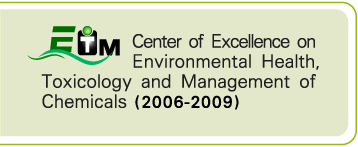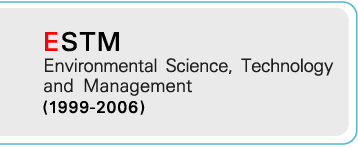|
Pseudomonas aeruginosa an opportunistic pathogen of humans that causes nosocomial infections in hospitalized patients, immunocompromised hosts and patients with burns as well as infecting those with cystic fibrosis. Among many virulence factors, its ability to survive oxidative stress is one of the important characteristics allowing this versatile bacterium to evade host defenses. In this study, a gene, PA0242, encoding putative enzyme involves in the conversion of 4-hydroxyphenylpyruvate (4HPP) to 2,5-dihydroxyphenylacetate (homogentisate) was studied. It is believed that homogentisate contributes to the ability of bacteria to fight against oxidative stress and overcome host defenses. This study was carried out with the objectives to investigate the phenotypic characteristics of PA0242 mutants, to determine pattern of expression under oxidative stress, and to examine the role of homogentisate in the detoxification of hydroperoxide radicals. The survival of the PA0242 mutant strain showed a 3- to 4-log reductions upon the treatment of cells with 5 mM and 10 mM t-BOOH, respectively, and 1- to 2-log reduction upon the treatment with 5 mM CHP, relative to the untreated controls. The complementary strain showed its ability to resist the oxidative stress insults. In order to investigate the expression of PA0242 and its possible regulation by the putative transcriptional regulator, PA0243, reverse transcription end point PCR was carried out. The PA0242 expression was found to be organic hydroperoxide inducible. It was induced by treatment of cells with 250 μM CHP and 250 μM t-BOOH. Expression of the PA0243 gene was also induced by organic hydroperoxides, which was a suggestive of a redox sensing ability for this putative transcription regulator. Moreover, PA0242 and PA0243 were co-transcribed as an operon. Assays of the hydroperoxide degradation ability of homogentisate were carried using a modified Ferrous Oxidation Xylenol-orange (FOX) assay. It was experimentally shown that homogentisate was able to reduce the amount of hydrogen peroxides (H2O2) by 60.7% and linoleic hydroperoxide (LOOH) by 60.6 %. These data indicate the role of PA0242 and homogentisate in the oxidative stress defense of Pseudomonas aeruginosa. แหล่งข้อมูล:
|
 Center of Excellence on Environmental Health and Toxicology (EHT)
Center of Excellence on Environmental Health and Toxicology (EHT)










